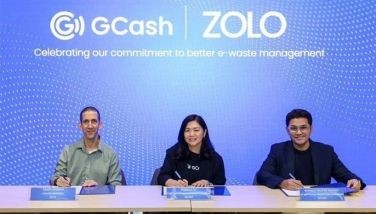Maximizing IT for long-term financial rewards
June 8, 2004 | 12:00am
A large majority of businesses have surprisingly unsophisticated ideas about return on investment (ROI). Many say they "just know" when technology offers good returns because "we get that job done much faster now." This is potentially a flawed approach.
Unless a business is prepared to define the return they want from an investment in Windows or any other product, how can they measure it? And how can they tell if the job that gets done faster is the job the technology purchase was designed to improve? Businesses will also not know if different technologies might have produced even higher ROI.
To help businesses gain the detailed information they need to make a good investment that will produce strong ROI, Microsoft devised a process, called the Rapid Economic Justification (REJ) Framework.
Developed over several years with academics and consultants, REJ is a mature process that goes beyond assessments like total cost of ownership to consider many other factors in a five-step process.
A deep understanding of the metrics a business relies on is essential in order to calculate ROI accurately. For example, if a company wants to increase profits by 10 percent, it is important to determine if that figure is expected in every department, from certain segments of a customer base or from cost cutting. Senior figures throughout the business – CEOs, CIOs and CFOs should all be consulted – and should give their metrics so the objectives can be outlined in a common language and desired process improvements identified. From this position, it becomes possible to measure the expected impact of technology and define the desired ROI.
Once a detailed description of an organization’s goals and processes are created, it becomes possible to identify the technology that will meet the stated goals using a business-centric decision making process, instead of a technology-led discussion.
For example, a REJ analysis validated that by using Microsoft Windows Server 2003 as a platform for an online extranet portal, Enterasys Networks, a leading provider of networking hardware and software solutions, could replace its manual customer fulfillment process and greatly improve services to partners and customers. Early post-deployment results indicate a 67 percent reduction in setup time for new partners on the portal site, a 20 percent reduction in IT management costs, and a 35 percent reallocation of IT support staff.
The third phase in building a business case based on business value is identifying the benefits technology generates. Often, this analysis identifies savings - people will get more done in less time. A more accurate assessment of ROI goes further and investigates the results of this free time. Will it increase profits? Will it defer the need for new hires? Does it avoid future costs? By asking these questions, REJ quantifies the benefits so a business can understand the likely monetary value of its investment.
A REJ analysis conducted by Guardia di Finanza (GDF), the Italian financial police, validated that by upgrading its information technology (IT) infrastructure from Microsoft Windows NT Server version 4.0 to one based on Microsoft Windows Server 2003, it would increase its workflow in several critical processes by threefold with the same personnel and a smaller budget. The new infrastructure contributed to a threefold increase in knowledge worker uptime (time that GDF investigators in the field have available all of the information resources of their office environment) and 30 percent less TCO per mobile user. Based on projected REJ results, GDF expects to reduce the costs of handling and archiving paper documents to virtually zero and to centrally manage three times more user objects with 18 percent less annual server TCO.
Many large projects identify benefits and costs but then fail to deliver because of unforeseen risks. REJ’s process assumes that it is important to identify and understand risk. The process’s risk-profiling tools include a matrix to help identify the likely risks facing a project, and then assess the impact of different risks. The result is a process which identifies more potential risks than other methodologies, allowing business to understand the risks associated with a project and develop risk mitigation plans to optimize the economic impact.
Digex performed REJ to assess a planned upgrade to its infrastructure. REJ indicated that 10 percent of new revenue was available, making the investment pay for itself in one year at an internal rate of return of 130 percent. The analysis was correct and Windows Server 2003, Internet Information Server 6.0 and Microsoft Active Directory lowered costs and brought lucrative new opportunities to the company’s door.
The last phase sees all of the previous work collated into a business case stating the potential changes an investment can bring to a business and quantifying them in financial terms. Microsoft conducts REJ assessments at no charge to customers, often working with Microsoft partners. They need commitment from senior managers and typically require two to four weeks of work, a commitment some businesses see as a significant investment which itself must deliver a return.
Without going through the REJ process, the companies mentioned above could not have known if their technology investments would produce the return they needed. And in today’s competitive markets where good investments create agile companies that succeed, a small investment in understanding ROI is one every business must recognize is essential to its future success.
Harrison is a manager at Microsoft Asia Pacific. Currently looking after customer and partner relationships for Microsoft in the consulting services division, Mike previously led a team of consultants, with a focus on demonstrating ROI and TCO benefits to customers.
Unless a business is prepared to define the return they want from an investment in Windows or any other product, how can they measure it? And how can they tell if the job that gets done faster is the job the technology purchase was designed to improve? Businesses will also not know if different technologies might have produced even higher ROI.
To help businesses gain the detailed information they need to make a good investment that will produce strong ROI, Microsoft devised a process, called the Rapid Economic Justification (REJ) Framework.
Developed over several years with academics and consultants, REJ is a mature process that goes beyond assessments like total cost of ownership to consider many other factors in a five-step process.
A deep understanding of the metrics a business relies on is essential in order to calculate ROI accurately. For example, if a company wants to increase profits by 10 percent, it is important to determine if that figure is expected in every department, from certain segments of a customer base or from cost cutting. Senior figures throughout the business – CEOs, CIOs and CFOs should all be consulted – and should give their metrics so the objectives can be outlined in a common language and desired process improvements identified. From this position, it becomes possible to measure the expected impact of technology and define the desired ROI.
Once a detailed description of an organization’s goals and processes are created, it becomes possible to identify the technology that will meet the stated goals using a business-centric decision making process, instead of a technology-led discussion.
For example, a REJ analysis validated that by using Microsoft Windows Server 2003 as a platform for an online extranet portal, Enterasys Networks, a leading provider of networking hardware and software solutions, could replace its manual customer fulfillment process and greatly improve services to partners and customers. Early post-deployment results indicate a 67 percent reduction in setup time for new partners on the portal site, a 20 percent reduction in IT management costs, and a 35 percent reallocation of IT support staff.
The third phase in building a business case based on business value is identifying the benefits technology generates. Often, this analysis identifies savings - people will get more done in less time. A more accurate assessment of ROI goes further and investigates the results of this free time. Will it increase profits? Will it defer the need for new hires? Does it avoid future costs? By asking these questions, REJ quantifies the benefits so a business can understand the likely monetary value of its investment.
A REJ analysis conducted by Guardia di Finanza (GDF), the Italian financial police, validated that by upgrading its information technology (IT) infrastructure from Microsoft Windows NT Server version 4.0 to one based on Microsoft Windows Server 2003, it would increase its workflow in several critical processes by threefold with the same personnel and a smaller budget. The new infrastructure contributed to a threefold increase in knowledge worker uptime (time that GDF investigators in the field have available all of the information resources of their office environment) and 30 percent less TCO per mobile user. Based on projected REJ results, GDF expects to reduce the costs of handling and archiving paper documents to virtually zero and to centrally manage three times more user objects with 18 percent less annual server TCO.
Many large projects identify benefits and costs but then fail to deliver because of unforeseen risks. REJ’s process assumes that it is important to identify and understand risk. The process’s risk-profiling tools include a matrix to help identify the likely risks facing a project, and then assess the impact of different risks. The result is a process which identifies more potential risks than other methodologies, allowing business to understand the risks associated with a project and develop risk mitigation plans to optimize the economic impact.
The last phase sees all of the previous work collated into a business case stating the potential changes an investment can bring to a business and quantifying them in financial terms. Microsoft conducts REJ assessments at no charge to customers, often working with Microsoft partners. They need commitment from senior managers and typically require two to four weeks of work, a commitment some businesses see as a significant investment which itself must deliver a return.
Without going through the REJ process, the companies mentioned above could not have known if their technology investments would produce the return they needed. And in today’s competitive markets where good investments create agile companies that succeed, a small investment in understanding ROI is one every business must recognize is essential to its future success.
Harrison is a manager at Microsoft Asia Pacific. Currently looking after customer and partner relationships for Microsoft in the consulting services division, Mike previously led a team of consultants, with a focus on demonstrating ROI and TCO benefits to customers.
BrandSpace Articles
<
>
- Latest
Latest
Latest
December 13, 2024 - 12:19pm
December 13, 2024 - 12:19pm
December 4, 2024 - 4:05pm
December 4, 2024 - 4:05pm
November 25, 2024 - 9:35am
November 25, 2024 - 9:35am
October 8, 2024 - 7:00am
October 8, 2024 - 7:00am
September 18, 2024 - 10:00am
By May Dedicatoria | September 18, 2024 - 10:00am
Recommended
January 7, 2025 - 12:00am



























